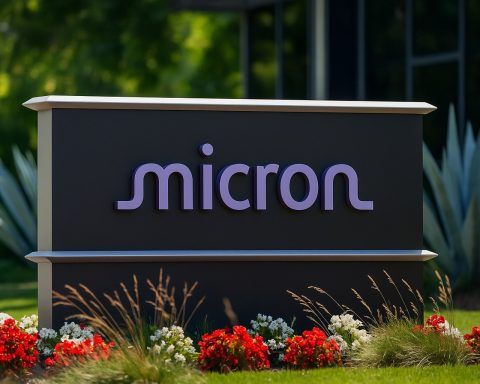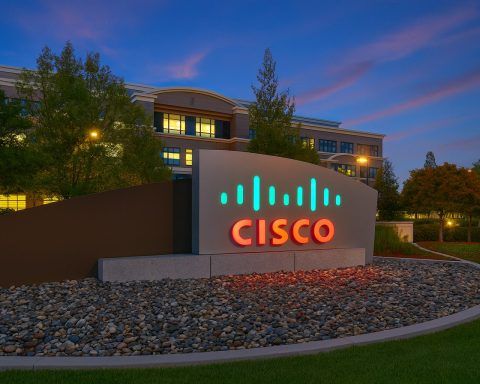Repare Therapeutics Inc. (NASDAQ: RPTX) is back in the spotlight today after investors digested last week’s surprise acquisition agreement with XenoTherapeutics, Inc., a Massachusetts-based non‑profit biotech. The stock is trading sharply higher and unusually active as the market prices in a mostly cash takeover and a complex contingent value right (CVR) structure that could unlock additional upside over the coming decade. [1]
As of this afternoon’s session, RPTX is changing hands around the low‑$2 range, not far above the estimated US$1.82 per‑share cash consideration embedded in the deal, and up close to 30% versus pre‑announcement levels, reflecting a classic “takeover‑arbitrage” trading pattern. [2]
Key facts for today (17 November 2025)
- Acquirer: XenoTherapeutics, Inc. and its wholly owned subsidiary Xeno Acquisition Corp (non‑profit biotech). [3]
- Headline value: Roughly US$78 million, based on an estimated US$1.82 per share and ~43 million shares outstanding. [4]
- Consideration:
- An estimated US$1.82 in cash per common share at closing (final figure depends on Repare’s net cash).
- One non‑transferable CVR per share, tied to future receivables, milestones and asset sales. [5]
- Timing: Transaction expected to close in Q1 2026, subject to shareholder and court approval in Québec and other customary conditions. [6]
- Status today: Stock is trading near but above the implied cash price, reflecting both the likelihood of deal completion and the market’s view of the CVR’s value. [7]
Deal at a glance: How the XenoTherapeutics acquisition works
Repare announced on 14 November 2025 that it had entered into a definitive arrangement agreement with XenoTherapeutics and Xeno Acquisition Corp. The deal will be executed via a court‑approved plan of arrangement under the Business Corporations Act (Québec). [8]
What shareholders receive
Under the agreement, each Repare shareholder is expected to receive: [9]
- Cash per share (estimated US$1.82):
- Final amount will be based on Repare’s closing net cash (cash minus liabilities and transaction costs) at the time the transaction closes.
- If Repare can monetize assets before closing, that could lift the cash portion.
- One Contingent Value Right (CVR) per share:
The CVR is non‑transferable and could pay out over up to 10 years from several sources:- Short‑term receivables collected within 90 days of closing.
- A high percentage (starting at 90% and stepping down over time) of net proceeds from existing partnerships with Bristol Myers Squibb, Debiopharm and DCx Biotherapeutics. [10]
- Proceeds from licensing or selling programs such as RP‑1664 (PLK4 inhibitor), RP‑3500 (camonsertib, ATR inhibitor), and the Polθ program (RP‑3467), within specified time windows. [11]
After closing, Repare will be taken private, its common shares are expected to be delisted from Nasdaq, and it intends to cease being a reporting issuer in Canada and deregister under the U.S. Exchange Act. [12]
Board’s rationale
Repare’s board, following a strategic review process, unanimously recommended the deal to shareholders, arguing it provides: [13]
- Immediate, certain cash value.
- Ongoing participation in potential upside from its partnerships and pipeline via the CVRs.
A special committee of independent directors evaluated the transaction and financial fairness opinions before the full board signed off.
Market reaction: RPTX trades like a classic cash‑plus‑CVR deal
Repare’s stock spiked in after‑hours trading on Friday, November 14, closing around US$2.15, more than 30% higher following the announcement. [14]
Today, Monday, November 17, the momentum has continued:
- Pre‑market and early‑session trading saw RPTX highlighted among big biotech movers on several market news screens. [15]
- Liquidity is far above normal daily volumes as arbitrage funds and event‑driven investors adjust positions. [16]
- Intraday prices have hovered only modestly above the US$1.82 cash reference, suggesting the market is assigning limited but non‑zero value to the CVR.
That trading pattern is broadly consistent with analyst commentary that sees little risk to deal completion but discounts the CVR given the uncertainty around future milestones and licensing proceeds. [17]
Today’s big new angle: TD Cowen downgrade and neutral sentiment
The fresh development today is how Wall Street is recalibrating its view of RPTX now that a sale is on the table.
TD Cowen: From Buy to Hold
In a research note published early this morning, TD Cowen downgraded Repare Therapeutics from Buy to Hold, explicitly citing the acquisition by XenoTherapeutics as the driver. [18]
Key points from the note:
- TD Cowen expects “little risk to closing” the transaction.
- The firm assigns “minimal value” to the CVR, and thus expects RPTX to trade only slightly above the estimated US$1.82 per‑share cash consideration until the deal closes.
- The analyst highlights Repare’s Q3 2025 results, including roughly US$3 million in net income and ~US$113 million in cash with more cash than debt, supporting the view that the cash component of the deal is well‑backed by the balance sheet. [19]
In other words, TD Cowen now sees RPTX primarily as a merger‑arbitrage situation rather than a long‑term growth story.
TipRanks & AI sentiment
A separate auto‑generated update on TipRanks this morning also flagged the XenoTherapeutics deal and notes that: [20]
- The most recent analyst rating is Hold with a US$1.50 price target.
- TipRanks’ AI “Spark” analyst views RPTX as Neutral, citing:
- persistent losses and revenue volatility,
- negative valuation metrics,
- offset by a strong cash position that provides some stability.
This reinforces the idea that the market now sees the takeover terms, rather than Repare’s stand‑alone valuation, as the main driver of short‑term price action.
CVR economics: Where the potential upside lives
For existing shareholders and event‑driven investors, the CVR mechanics are crucial.
According to Repare’s deal announcement and SEC filings, the CVRs are tied to: [21]
- Near‑term receivables
- 100% of certain receivables collected within 90 days of closing, net of allowed costs.
- Partnership proceeds (BMS, Debiopharm, DCx)
- A high percentage of net proceeds from Repare’s existing partnerships, starting at 90% and stepping down over time to 75% through year 10 after closing.
- These collaborations include:
- A multi‑target synthetic‑lethality discovery collaboration with Bristol Myers Squibb. [22]
- An exclusive worldwide license with Debiopharm for the PKMYT1 inhibitor lunresertib, which carries up to US$257 million in potential milestones plus single‑digit royalties. [23]
- The 2025 out‑licensing of Repare’s discovery platforms to DCx Biotherapeutics, which includes upfront payments, equity and tiered royalties. [24]
- Pipeline asset monetization
- CVR holders receive 100% of net proceeds from licensing or selling key programs such as RP‑1664 (PLK4 inhibitor) and RP‑3500 (camonsertib) if these deals are signed before closing.
- They also receive 50–100% of proceeds from certain Polθ and other pipeline transactions, depending on timing and the specific asset. [25]
Because these cash flows are uncertain in both timing and size, public‑market investors typically heavily discount CVRs—one reason TD Cowen and others do not expect RPTX to trade dramatically above the US$1.82 cash figure.
Business update: Q3 2025 snapshot
Alongside the deal announcement, Repare reported its third‑quarter 2025 results, giving investors a last look at the company as a stand‑alone public entity: [26]
- Cash, cash equivalents and marketable securities:
- US$112.6 million as of 30 September 2025 (up slightly from US$109.5 million at 30 June 2025).
- Collaboration revenue:
- US$11.6 million in Q3 2025, primarily from licensing and partnership agreements, versus zero in the year‑ago quarter.
- R&D spending:
- Net R&D expenses dropped sharply to US$7.5 million in Q3 from US$28.4 million a year earlier, reflecting pipeline prioritization and restructuring.
- Net income:
- US$3.3 million (US$0.08 diluted EPS) in Q3 2025, compared with a US$34.4 million loss in Q3 2024.
The company highlighted continued progress for its synthetic‑lethality‑focused pipeline, including:
- RP‑1664 (PLK4 inhibitor): early Phase 1 data in TRIM37‑high solid tumors presented at AACR‑NCI‑EORTC showed encouraging tolerability and signals of efficacy. [27]
- RP‑3467 (Polθ inhibitor) and camonsertib (RP‑3500): which are now largely being monetized through partnerships and prospective out‑licensing deals. [28]
This financial profile—strong cash, shrinking operating expenses and an asset‑light model—is part of what made Repare an attractive take‑private candidate for a mission‑driven entity like XenoTherapeutics.
Shareholder pushback: Law firms question “fair price”
No modern biotech M&A story is complete without shareholder rights firms weighing in, and Repare is no exception.
Shortly after the deal was announced, multiple firms disclosed investigations into whether the US$1.82 + CVR package is fair to minority shareholders:
- Halper Sadeh LLC announced an investigation into whether the sale to XenoTherapeutics is fair and whether the board complied with its fiduciary duties. [29]
- Ademi LLP similarly launched an investigation, arguing that insiders may receive “substantial benefits” under change‑of‑control arrangements and that the merger agreement’s termination fee and deal‑protection provisions could deter superior bids. [30]
These investigations are common in U.S. M&A and do not necessarily imply wrongdoing, but they can result in:
- Additional disclosures in the proxy materials.
- Occasionally, minor improvements to deal terms or tweaks to CVR language.
For now, there is no competing bid publicly disclosed, and Xeno remains the only buyer at the table.
What happens next?
For investors tracking RPTX through the rest of 2025 and into 2026, a few milestones matter most:
- Proxy statement & special meeting
- Repare will file a proxy statement with the SEC and Canadian regulators detailing the transaction, fairness opinions and background to the deal.
- Shareholders will then vote at a special meeting, where the arrangement requires approval by two‑thirds of votes cast, plus a “majority of the minority” under Canadian rules. [31]
- Court approval in Québec
- The Superior Court of Québec must approve the plan of arrangement before closing.
- Potential competing offers or amended terms
- While the agreement includes customary non‑solicitation and termination‑fee clauses, Repare can respond to a bona fide superior proposal, subject to Xeno’s right to match. [32]
- Closing and delisting (target: Q1 2026)
- If all conditions are satisfied, the deal is expected to close in the first quarter of 2026, at which point:
- Cash will be paid out to shareholders of record.
- CVRs will be issued and administered via the trustee structure outlined in the arrangement agreement. [33]
- If all conditions are satisfied, the deal is expected to close in the first quarter of 2026, at which point:
What it means for different types of readers
- Current RPTX shareholders:
You’re effectively evaluating a mostly fixed‑value cash deal with a long‑dated “lottery ticket” on Repare’s partnerships and pipeline via the CVR. The key questions are whether you believe another bidder could emerge and how much value you assign to future milestone streams versus taking the cash and redeploying it elsewhere. - Biotech industry watchers:
The transaction underscores how synthetic‑lethality and DNA‑damage repair platforms remain strategically valuable, even when the economics ultimately favour a low‑premium take‑private rather than a large‑cap pharma buyout. - Patients and clinicians:
The press release emphasizes XenoTherapeutics’ commitment to maximizing the value of Repare’s programs through partnerships and licensing, rather than continuing expensive in‑house late‑stage development. Over time, success will be measured less by the stock chart and more by whether RP‑1664, camonsertib or Polθ inhibitors move meaningfully forward in clinical trials with new or existing partners. [34]
Important: This article is for information and news purposes only and does not constitute investment advice, a recommendation, or a solicitation to buy or sell any security. Always do your own research or consult a licensed financial advisor before making investment decisions.
References
1. ir.reparerx.com, 2. www.nasdaq.com, 3. ir.reparerx.com, 4. www.marketscreener.com, 5. ir.reparerx.com, 6. ir.reparerx.com, 7. www.investing.com, 8. ir.reparerx.com, 9. ir.reparerx.com, 10. ir.reparerx.com, 11. ir.reparerx.com, 12. ir.reparerx.com, 13. ir.reparerx.com, 14. www.nasdaq.com, 15. www.rttnews.com, 16. www.marketbeat.com, 17. www.investing.com, 18. www.investing.com, 19. www.investing.com, 20. www.tipranks.com, 21. ir.reparerx.com, 22. ir.reparerx.com, 23. ir.reparerx.com, 24. ir.reparerx.com, 25. ir.reparerx.com, 26. ir.reparerx.com, 27. ir.reparerx.com, 28. ir.reparerx.com, 29. www.businesswire.com, 30. www.gurufocus.com, 31. ir.reparerx.com, 32. ir.reparerx.com, 33. ir.reparerx.com, 34. ir.reparerx.com







